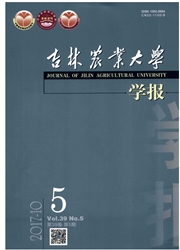

 中文摘要:
中文摘要:
采用焦点取样连续记录方法,对甘肃兴隆山保护区马麝(Moschus sifanicus)繁育中心的雌性野捕马麝及圈养繁殖马麝的行为进行了取样,比较了非交配季节和交配季节2种来源雌麝的行为差异。结果表明:由于圈养环境的影响因子的类型、作用方式及作用强度相同,导致甘肃兴隆山麝场的雌性野捕及圈养繁殖马麝在非交配季节和交配季节的行为格局相似,麝类动物总体行为的刚性较强,可驯化性较差。在交配季节,雌麝的时间分配明显向繁殖活动相关行为倾斜,信息收集行为(环境探究和尾阴探究)的时间显著增加,摄食及反刍时间减少,亲和性下降,冲突增多。此外,雌麝在交配季节有蹭尾行为的表达。
 英文摘要:
英文摘要:
This study was conducted in the Breeding Center for Alpine Musk Deer, Xinglongshan National Nature Reserve, Gansu province of western China. Focal sapling and all occurrence recording were used to quantify the behavioral pattern of 23 captive Alpine musk deer in non-mating season (from August to October) and mating season (from November to January next year), and the behavioral duration of 12 behavioral patterns such as standing-gazing were recorded. The behavioral budgeting was compared between captive-bred and wild-caught females to explore the potential differences, and the monthly behavioral differences during non-breeding season were analyzed. Our results showed that there were not significant behavioral differences between wild-caught and captive-breeding deer in mating season and non-mating season owing to the same enclosure and managing syatem in musk deer farm, which implies that musk deer may be not an appropriate animal to be domesticated. The behavioral modes of female musk deer were different, however, between mating season and non-mating season, and female fed and ruminated less, but sniff environment and the ano-genital region of other objectives more in mating season than in non-mating season. Furthermore, female emitted tail-pasting in mating season, which has been thought as the specific behavior of male musk deer.
 同期刊论文项目
同期刊论文项目
 同项目期刊论文
同项目期刊论文
 期刊信息
期刊信息
